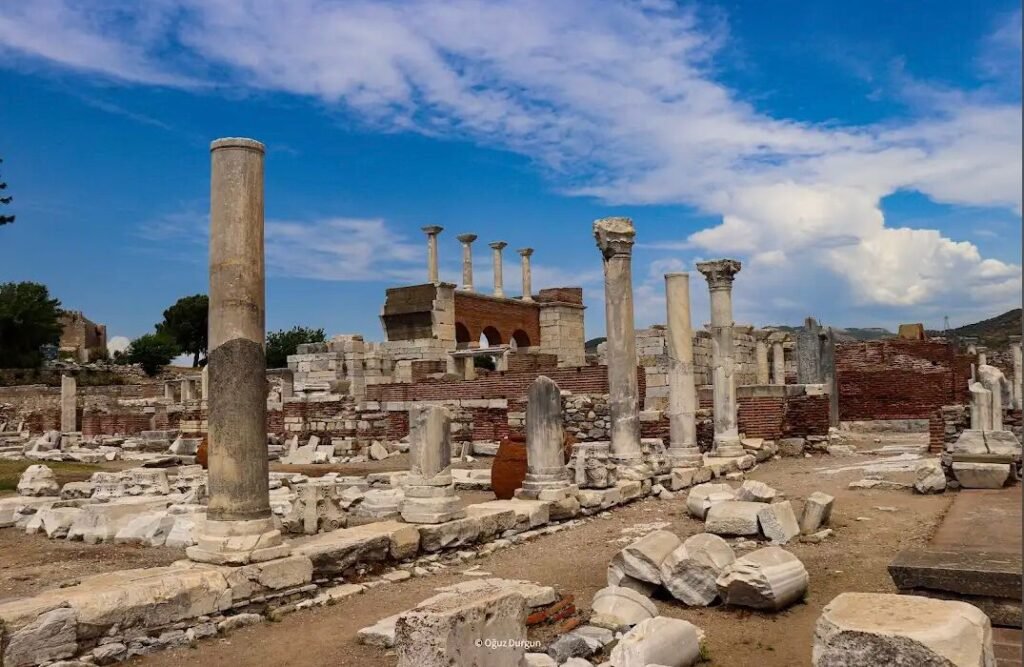Description
St. John’s Basilica: A Testament to Faith and History
Nestled in the charming town of Selçuk, in the heart of Turkey’s Izmir Province, stands a site of profound historical and religious significance: St. John’s Basilica. This ancient structure, located at Atatürk, St. Jean Cd., 35920 Selçuk, is more than a ruin; it is a bridge between centuries, a place where faith, history, and culture intertwine. Whether you are a history buff, a pilgrim, or simply an inquisitive traveler, St. John’s Basilica offers a captivating journey back in time.
The Historical Significance of St. John’s Basilica
St. John’s Basilica was constructed in the 6th century AD during the reign of the Byzantine Emperor Justinian I and his wife, Theodora. It was built to honor St. John the Apostle, one of Jesus Christ’s closest disciples and the presumed author of the Book of Revelation. According to tradition, St. John spent his final years in Ephesus, preaching and spreading the Christian faith, and was buried on Ayasuluk Hill, where the basilica now stands.
The basilica was designed as a grand memorial to St. John, believed to house his tomb at its very heart. Its cruciform layout, complete with domes and stunning architectural details, was inspired by the grandeur of the Hagia Sophia in Constantinople. In its heyday, St. John’s Basilica was a major pilgrimage site, attracting believers from across the Christian world.
Architectural Marvels and Features
Though much of the basilica lies in ruins today, the remnants still speak volumes about its former splendor. Visitors can explore the massive courtyard, the marble columns that once supported its soaring domes, and the intricate carvings that adorn some of the surviving stones. The basilica’s layout reveals a classic Byzantine architectural style, with a central nave, transepts, and an apse, all forming a cruciform shape.
One of the most fascinating features of St. John’s Basilica is the crypt, where St. John’s tomb is believed to reside. Though the tomb was desecrated over the centuries, it remains a sacred spot for many visitors. Near the tomb, you can find fragments of mosaics and frescoes that hint at the artistic brilliance of the basilica’s original decor.
Another highlight is the stunning view from the basilica’s hilltop location. From here, visitors can enjoy panoramic vistas of Selçuk and its surrounding landscapes, including the ancient city of Ephesus, the Isa Bey Mosque, and the medieval Selçuk Castle. This vantage point underscores the strategic and spiritual significance of the basilica’s location.
A Journey Through Time
St. John’s Basilica has witnessed the ebb and flow of history. It endured invasions, earthquakes, and neglect, each leaving its mark on the structure. During the Seljuk period, parts of the basilica were repurposed, reflecting the cultural transitions of the region. Despite these challenges, the site remains a powerful symbol of resilience and devotion.
In the modern era, archaeological excavations and restoration efforts have brought renewed attention to St. John’s Basilica. Many of the artifacts discovered on-site, including inscriptions, sculptures, and coins, are now housed in the nearby Ephesus Archaeological Museum, providing further context to the basilica’s storied past.
Visiting St. John’s Basilica
St. John’s Basilica is easily accessible from the town of Selçuk, making it a convenient stop for travelers exploring the region. The site is open to visitors year-round, with a small entrance fee that supports ongoing preservation efforts.
As you wander through the ruins, take your time to absorb the atmosphere. Imagine the chants of ancient liturgies, the footsteps of pilgrims, and the quiet prayers that once filled these sacred halls. Bring a guidebook or join a guided tour to fully appreciate the historical and architectural nuances of the basilica.
Photography enthusiasts will find plenty of opportunities to capture the site’s beauty, especially during sunrise or sunset when the light casts a golden glow over the ruins. For those interested in a deeper understanding of the region’s history, combining a visit to St. John’s Basilica with trips to nearby landmarks such as Ephesus, the Temple of Artemis, and the House of the Virgin Mary is highly recommended.
Tips for a Memorable Visit
- Wear Comfortable Shoes: The uneven terrain of the ruins requires sturdy footwear for safe exploration.
- Stay Hydrated: Selçuk’s Mediterranean climate can be quite warm, so carry water during your visit.
- Check the Weather: Visiting during spring or autumn offers pleasant weather and fewer crowds.
- Respect the Site: As a place of historical and spiritual significance, be mindful of preserving its integrity.
Conclusion
St. John’s Basilica is more than just an ancient ruin; it is a timeless monument to faith, history, and the enduring human spirit. Whether you are drawn by its religious significance, its architectural beauty, or its historical context, the basilica promises an enriching experience. As you stand amidst its weathered stones, you are not just observing history; you are stepping into it.
A visit to St. John’s Basilica is an opportunity to connect with the past while appreciating the cultural and spiritual heritage that continues to shape the present. Make it a part of your journey through Turkey, and let its stories inspire your own.
Location
-
Atatürk, St. Jean Cd., 35920 Selçuk/İzmir







